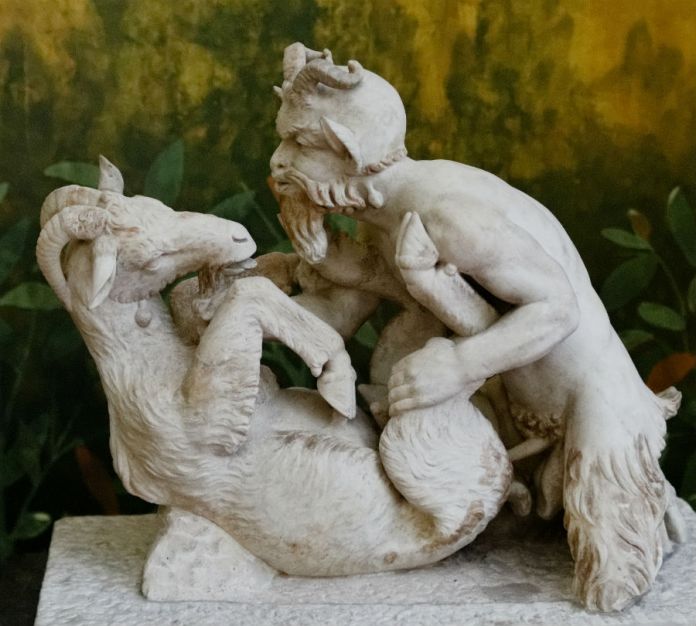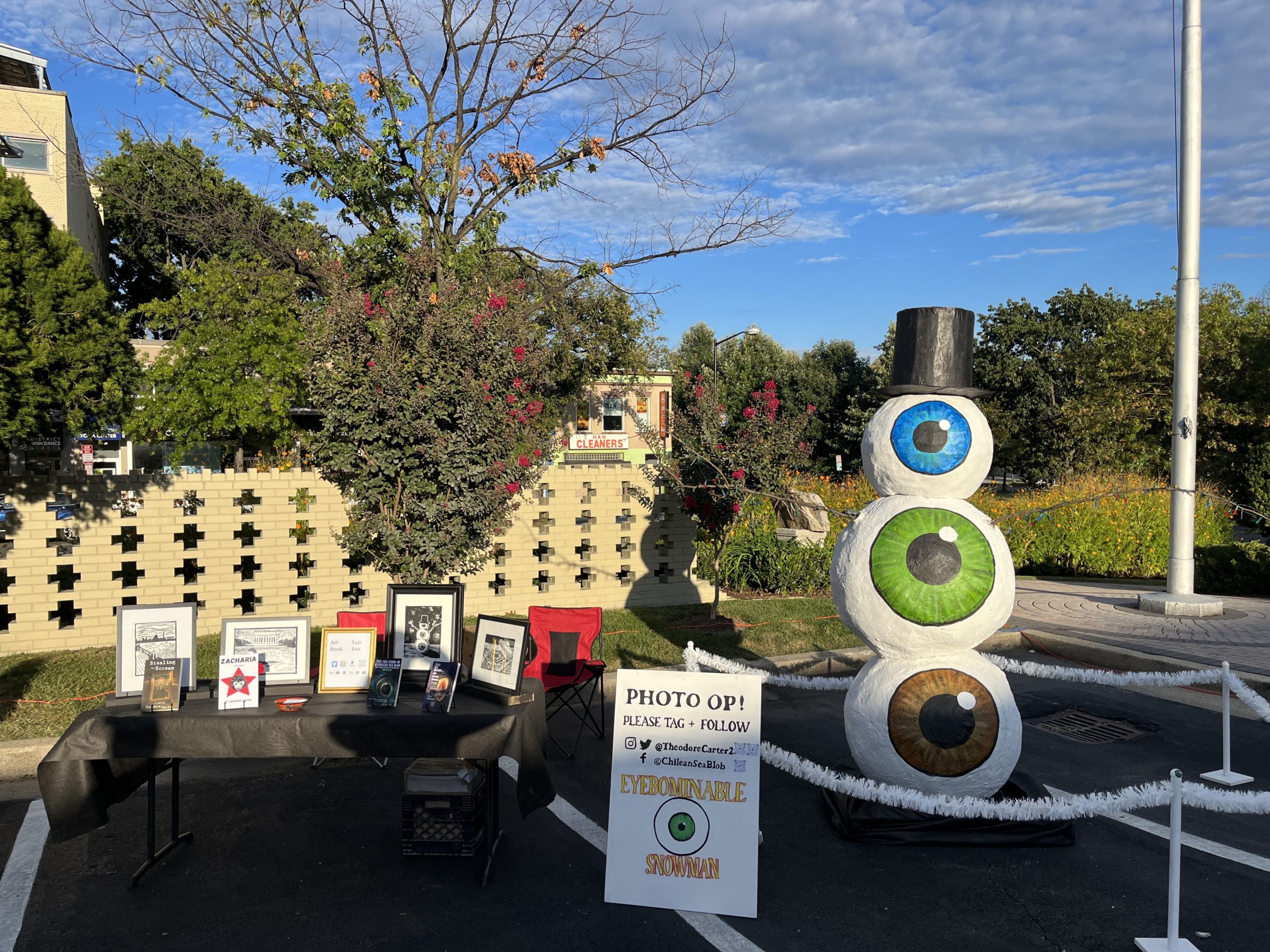This story originally appeared in Dirge Magazine on September 4, 2016.
Though it may not be polite to talk about in history class, erotica appears in most great civilizations in human history. From hieroglyphs of fornicating Egyptians, to wild orgiastic Greek romps painted on pottery, to octopus cunnilingus wood cuts in Edo-period Japan, when there is art and culture, there is erotica.
Attitudes about sex and art change constantly and vary across cultures, but you’d be wrong to assume modern sexual mores are more depraved than those of antiquity. Ancient erotica is rife with kink of many stripes, and the artwork here proves anything that can be tried has been tried thousands of years before you came along. If it can’t be tried (the human body has limitations), it’s been imagined and recorded in graphic detail.
In ancient Egypt, sexual images were common in temples, tombs, and religious texts. The Sun God created other Gods by masturbating, an important event recorded in Egyptian art. Often, hieroglyphs implied sexual acts rather than depicting them in detail. Artists used symbols and coded iconography. The Turin Erotic Papyrus, however, shows twelve sexual positions in detail and even makes creative use of a chariot and a piece of pottery. Some interpret this piece as a satirical work poking fun at the pious upper classes. Whatever its purpose, it’s explicit, imaginative, and is changing modern views of sex in ancient Egypt.
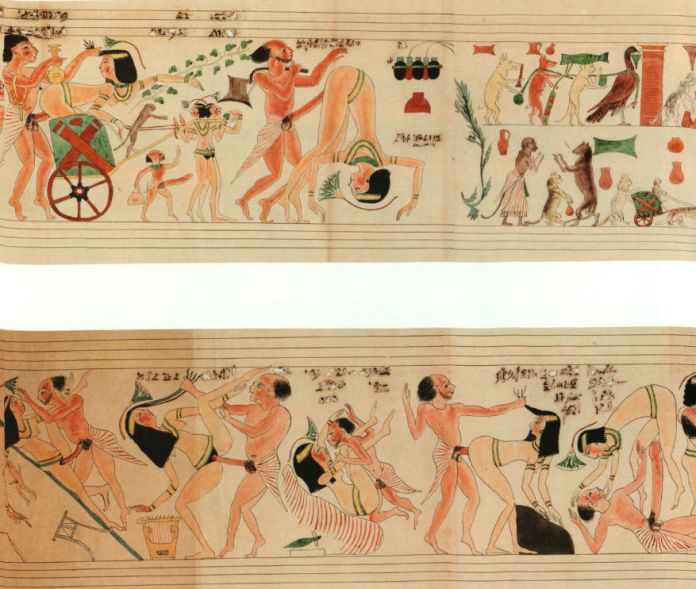
Anyone who’s read a few Greek myths knows how the desires of sex-crazed Gods wreaked havoc on their own societal structure and us mortals. In ancient Greece, bisexuality was common, as was prostitution. Grown men sometimes had condoned sexual relationships with adolescent boys. With sex so intertwined with religion, myth, and culture, it’s not surprising it shows up in art as well.
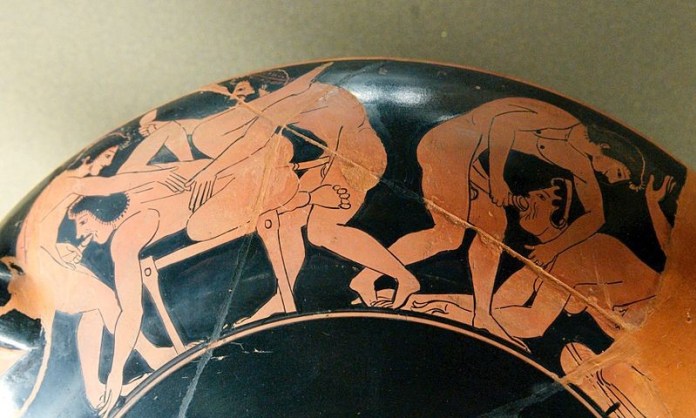
19th Century Japanese artist Hokusai’s beautiful “Wave” woodcut graces t-shirts and handbags today, but Hokusai produced several x-rated works too racy for the museum gift shop. Hokusai’s “The Dream of the Fisherman’s Wife” (also known as “The Pearl Diver and the Octopus” and several other titles) is part of the Shunga tradition, a style of Japanese erotic art done in ink or woodblock prints from 1600-1860. These works were outlawed in Japan in 1722, but were still produced, shared, and used as sex education material for young couples. In such cases, I assume the couples looked at pictures focusing on human sex acts rather those featuring octopi.
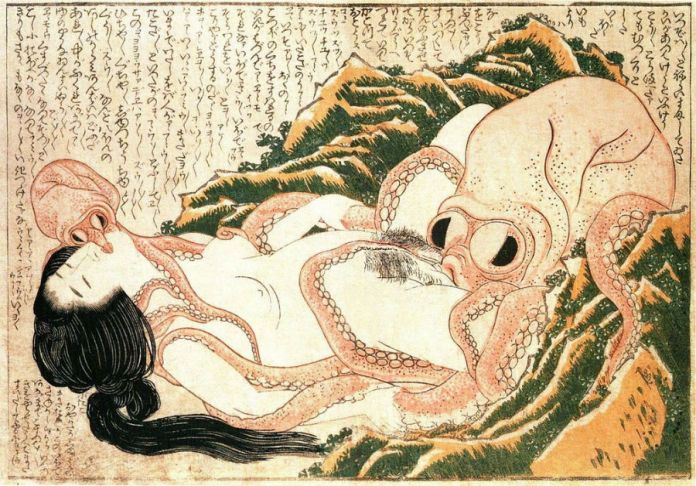
Several hundred years of cultural influence from Islamic countries and the British colonists have made India into a morally conservative country. However, don’t forget this is also the country that brought us the Kama Sutra. The sculptures on the Khajuraho temples, built between 950 and 1050, show statues of men, women, and animals in a number of inventive sexual acts. Theories differ as to why these sexual images appear on the temple. Some believe people came to the temples to learn about sex. Others think the sculptures represent new beginnings.


